Discover 16 beautiful flowers that start with the letter “N”, perfect for adding color and variety to your garden. Learn about their growing requirements, unique features, and how to incorporate them into your landscape.
From the delicate narcissus of springtime to the vibrant nasturtiums of summer, flowers that start with the letter “N” offer a diverse array of options for gardeners and flower enthusiasts. Whether you’re looking to add a touch of elegance, brighten up a shady corner, or attract pollinators to your outdoor space, these 16″N” blooms are sure to delight and inspire.
In this comprehensive guide, we’ll introduce you to a wide range of flowers – from classic favorites to rare and unique varieties – all of which begin with the letter “N.” We’ll provide detailed information on each bloom’s USDA growing zones, sun exposure needs, soil requirements, and visual appeal, empowering you to select and cultivate the perfect “N” flowers for your garden.
So, get ready to explore the enchanting world of “N” flowers and add some new and noteworthy plants to your landscape. Let’s dive in and discover 16 captivating blooms that are sure to make your garden shine.
1. Nasturtium

- Botanical name: Tropaeolum
- USDA Growing Zones: 10-11
- Sun Exposure: Full sun to partial shade
- Soil Needs: Well-drained, poor soil
Nasturtiums are cheerful, trailing plants that produce brightly colored, edible flowers in shades of orange, yellow, and red. These carefree annuals are easy to grow, self-seeding readily and thriving in a range of soil conditions. Nasturtiums make excellent ground covers, container plants, and additions to edible gardens, where their peppery-flavored blooms can be used to add a pop of color to salads and other dishes.
2. Nemesia
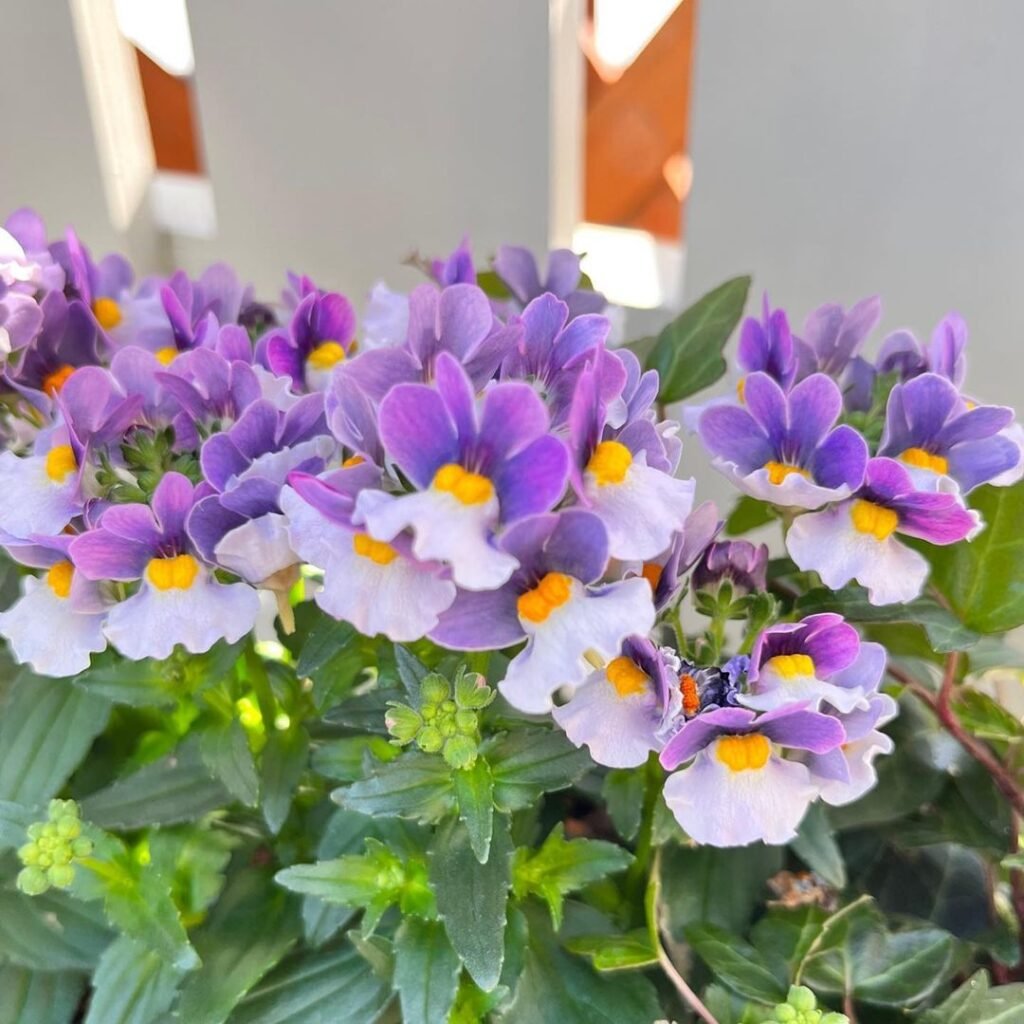
- Botanical name:Nemesia
- USDA Growing Zones: 9-11
- Sun Exposure: Full sun to partial shade
- Soil Needs: Moist, well-drained soil
Nemesia is a fragrant, mounding annual that features delicate, snapdragon-like flowers in a variety of pastel shades, including blue, purple, white, and yellow. These sun-loving or partially shaded plants thrive in moist, well-drained soil and make excellent choices for borders, containers, and hanging baskets.
3. Nicotiana

- Botanical name:Nicotiana
- USDA Growing Zones: 10-11
- Sun Exposure: Full sun to partial shade
- Soil Needs: Rich, well-drained soil
Also known as flowering tobacco, Nicotiana is a [tall, fragrant annual that produces clusters of tubular flowers in shades of white, pink, red, and purple. These sun-loving or partially shaded plants prefer rich, well-drained soil and make beautiful additions to borders, cut flower gardens, and evening-scented gardens, where their sweet fragrance can be enjoyed after the sun goes down.
4. Narcissus
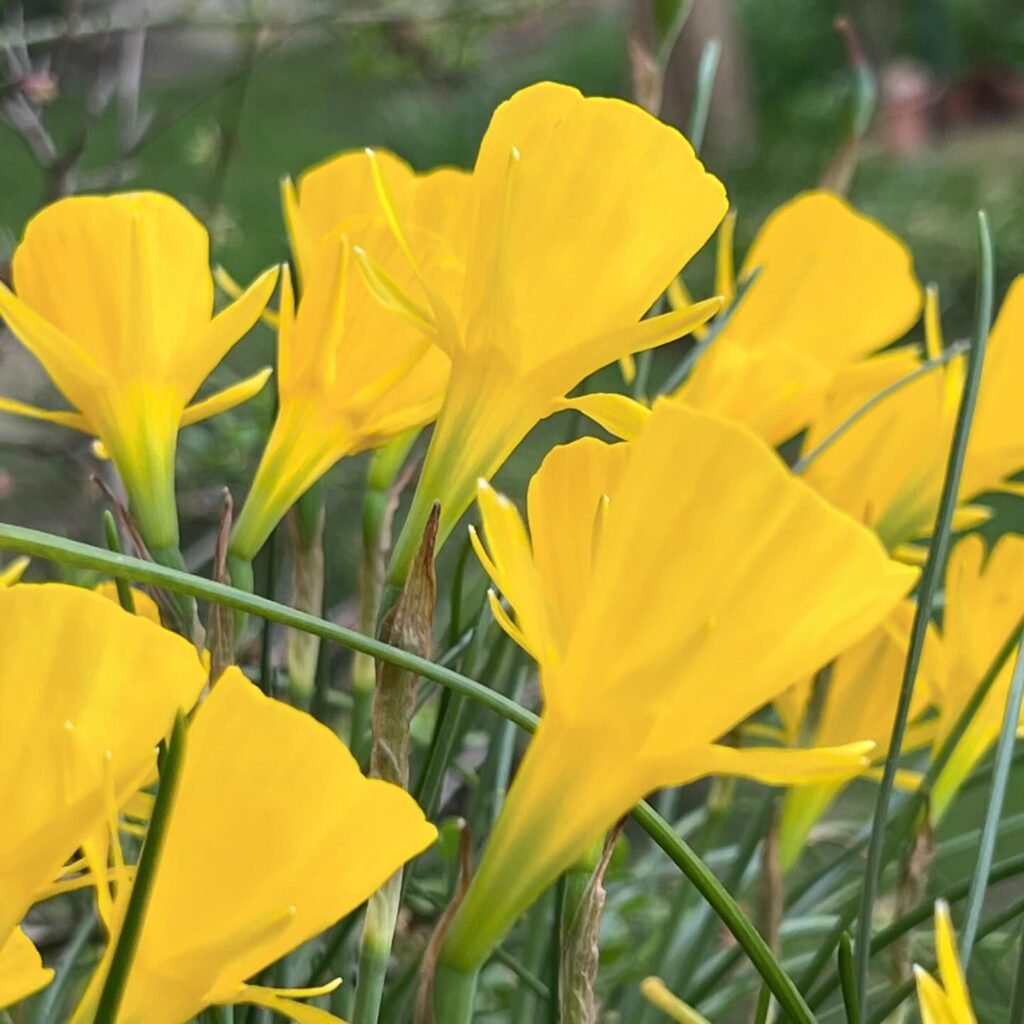
- Botanical name:Narcissus
- USDA Growing Zones: 3-8
- Sun Exposure: Full sun
- Soil Needs: Well-drained, nutrient-rich soil
Narcissus, also known as daffodils, are classic springtime flowers that feature [distinctive, trumpet-shaped blooms in shades of yellow, white, and even pink. These hardy, bulbous perennials thrive in well-drained, nutrient-rich soil and full sun, making them a reliable and easy-to-grow choice for gardens, borders, and naturalized areas.
5. New Guinea Impatiens
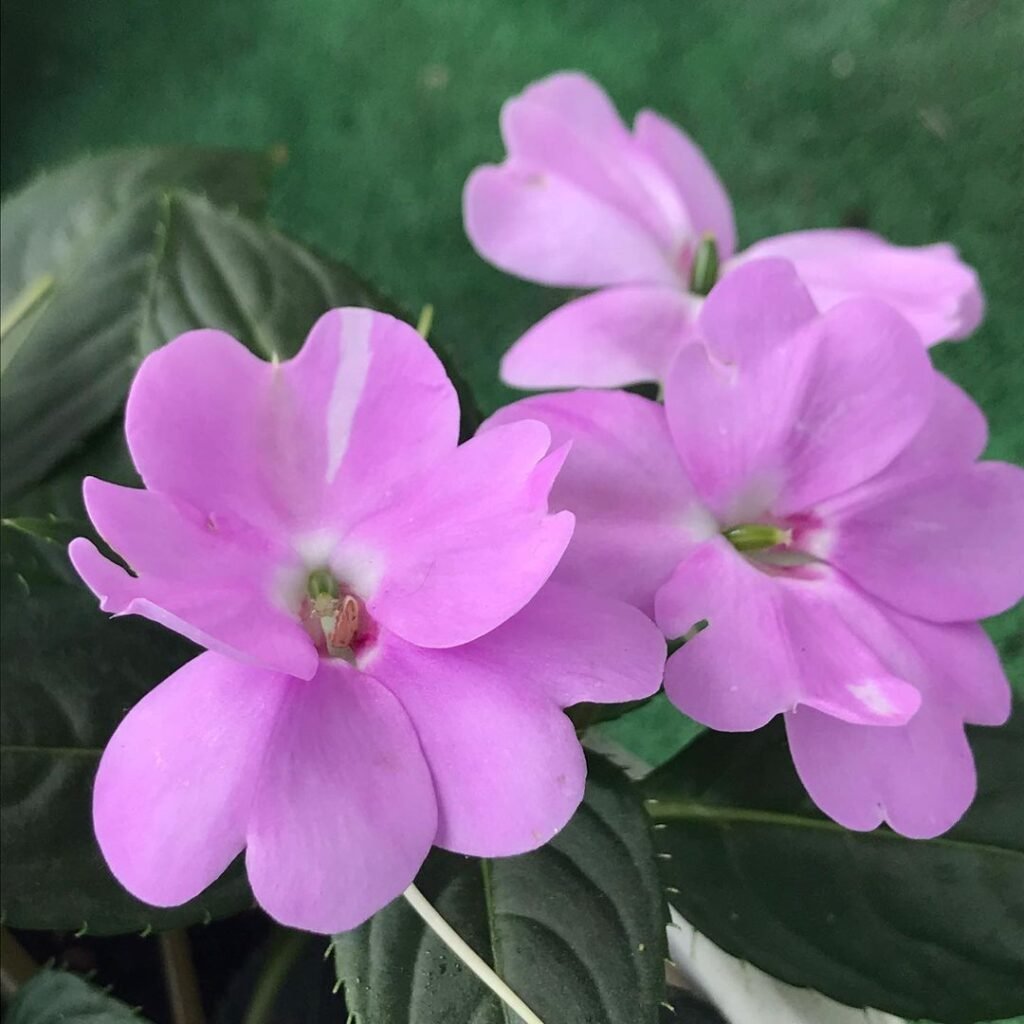
- Botanical name:Impatiens
- USDA Growing Zones: 10-11
- Sun Exposure: Partial shade
- Soil Needs: Moist, well-drained soil
New Guinea Impatiens are [lush, tropical-looking annuals that produce [large, showy flowers in a range of vibrant colors, including red, pink, purple, and white. These shade-loving plants thrive in moist, well-drained soil and make excellent choices for containers, hanging baskets, and shaded garden beds.
6. Nandina
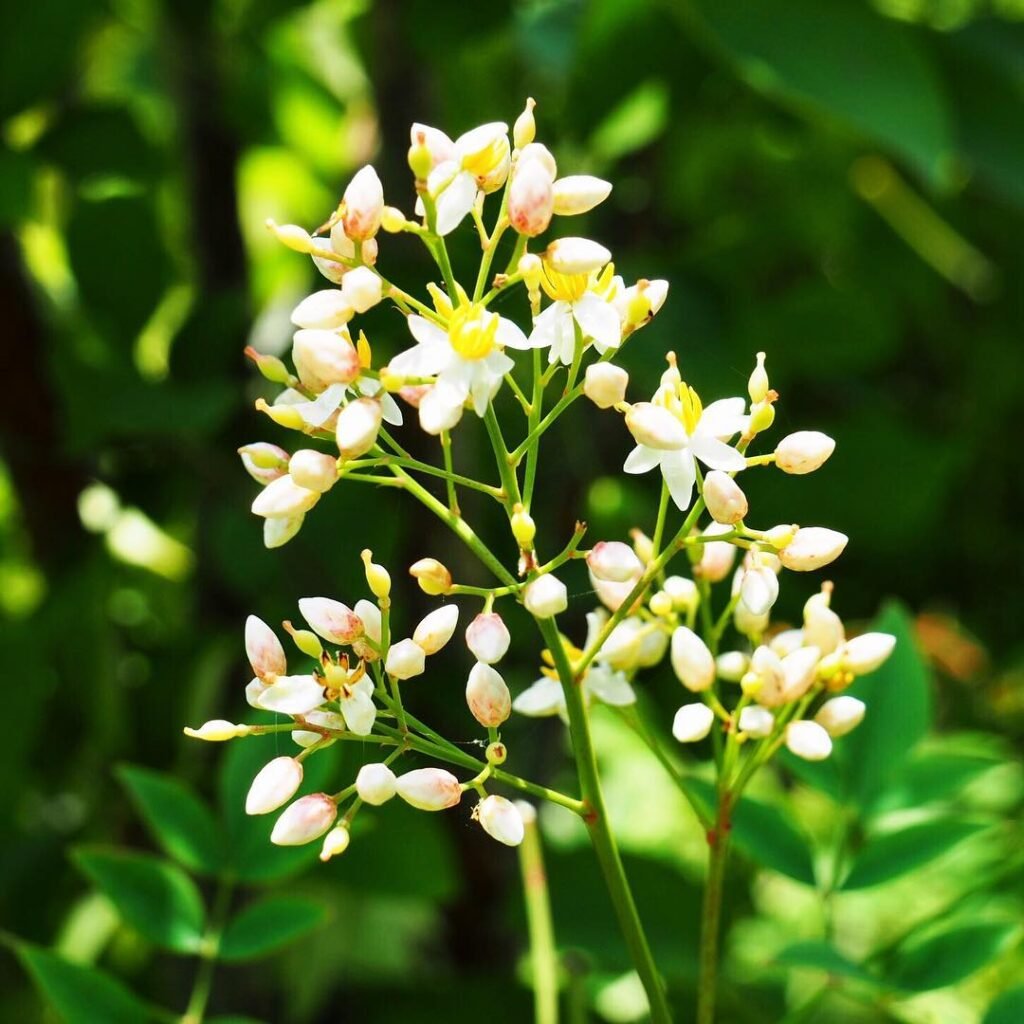
- Botanical name:Nandina domestica
- USDA Growing Zones: 6-9
- Sun Exposure: Full sun to partial shade
- Soil Needs: Well-drained, acidic soil
Also known as Heavenly Bamboo, Nandina is an evergreen shrub that features clusters of white flowers in the spring, followed by striking red or burgundy foliage in the fall and winter. These versatile plants thrive in full sun to partial shade and well-drained, acidic soil, making them a popular choice for foundation plantings, hedges, and winter interest in the landscape.
7. Nigella
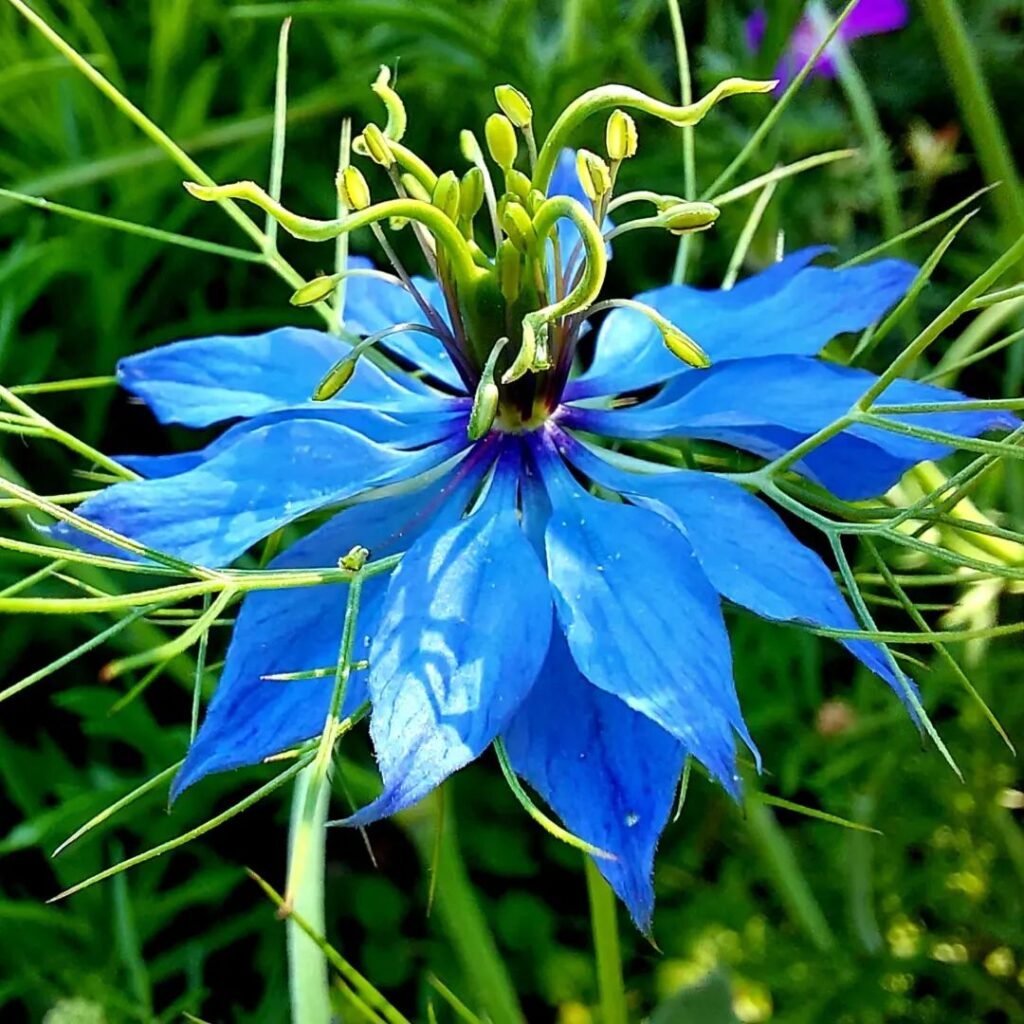
- Botanical name:Nigella
- USDA Growing Zones: 2-11
- Sun Exposure: Full sun
- Soil Needs: Well-drained, nutrient-rich soil
Nigella, also known as Love-in-a-Mist, is a [delicate, self-seeding annual that produces [unique, seed pod-like flowers in shades of blue, purple, and white. These sun-loving plants prefer well-drained, nutrient-rich soil and make charming additions to cottage gardens, cut flower beds, and informal bouquets.
8. Nasturtium
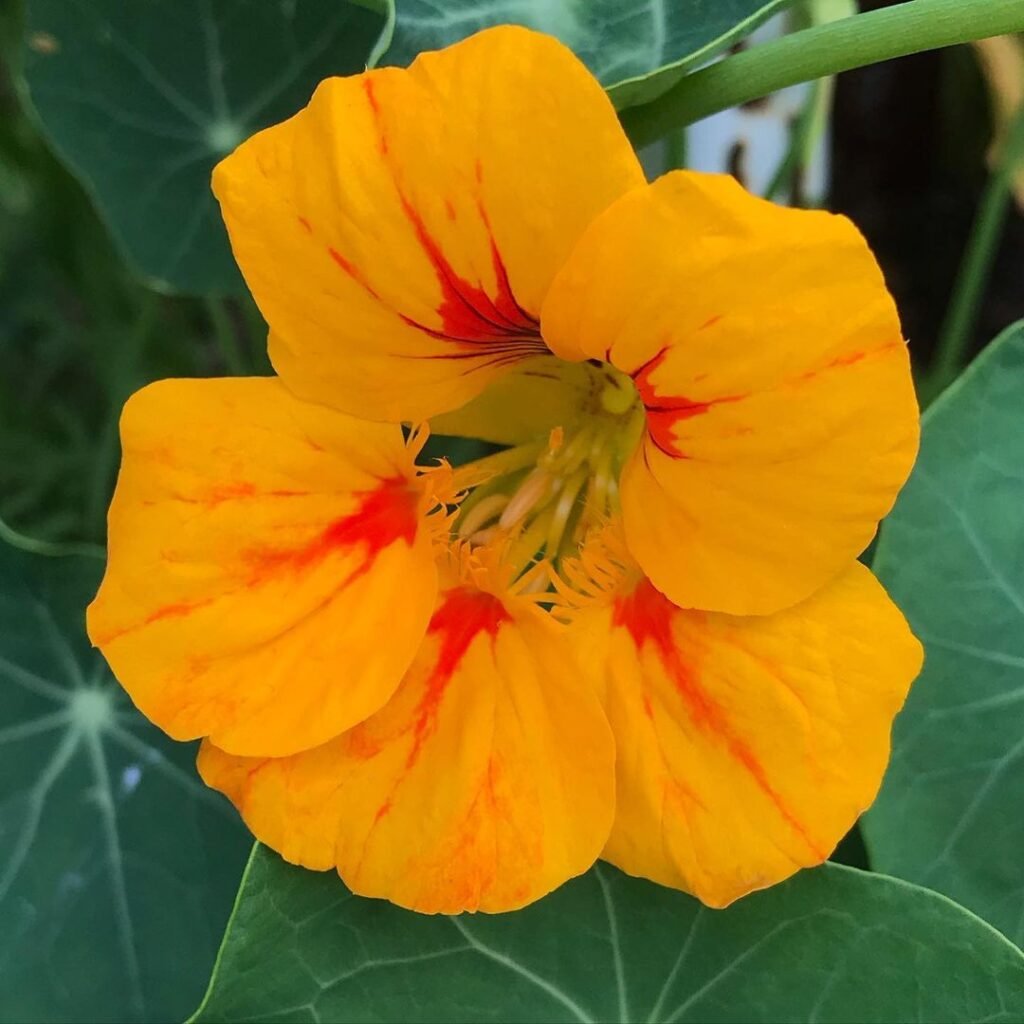
- Botanical name:Tropaeolum
- USDA Growing Zones: 10-11
- Sun Exposure: Full sun to partial shade
- Soil Needs: Well-drained, poor soil
We’ve already covered nasturtiums earlier, but these [cheerful, trailing annuals are so versatile and eye-catching that they deserve a second mention. Nasturtiums produce [brightly colored, edible flowers in shades of orange, yellow, and red, and they thrive in well-drained, poor soil and a range of sun exposures. Use nasturtiums as ground covers, container plants, or additions to your edible garden.
9. Nightshade

- Botanical name:Solanum
- USDA Growing Zones: 10-11
- Sun Exposure: Full sun
- Soil Needs: Well-drained, nutrient-rich soil
Nightshade, also known as ornamental eggplant, is a [unique, tropical-looking plant that features [large, showy flowers in shades of purple, white, and blue, followed by [distinctive, spiny fruit. These sun-loving plants thrive in well-drained, nutrient-rich soil and make eye-catching additions to borders, containers, and edible gardens.
10. Nerine
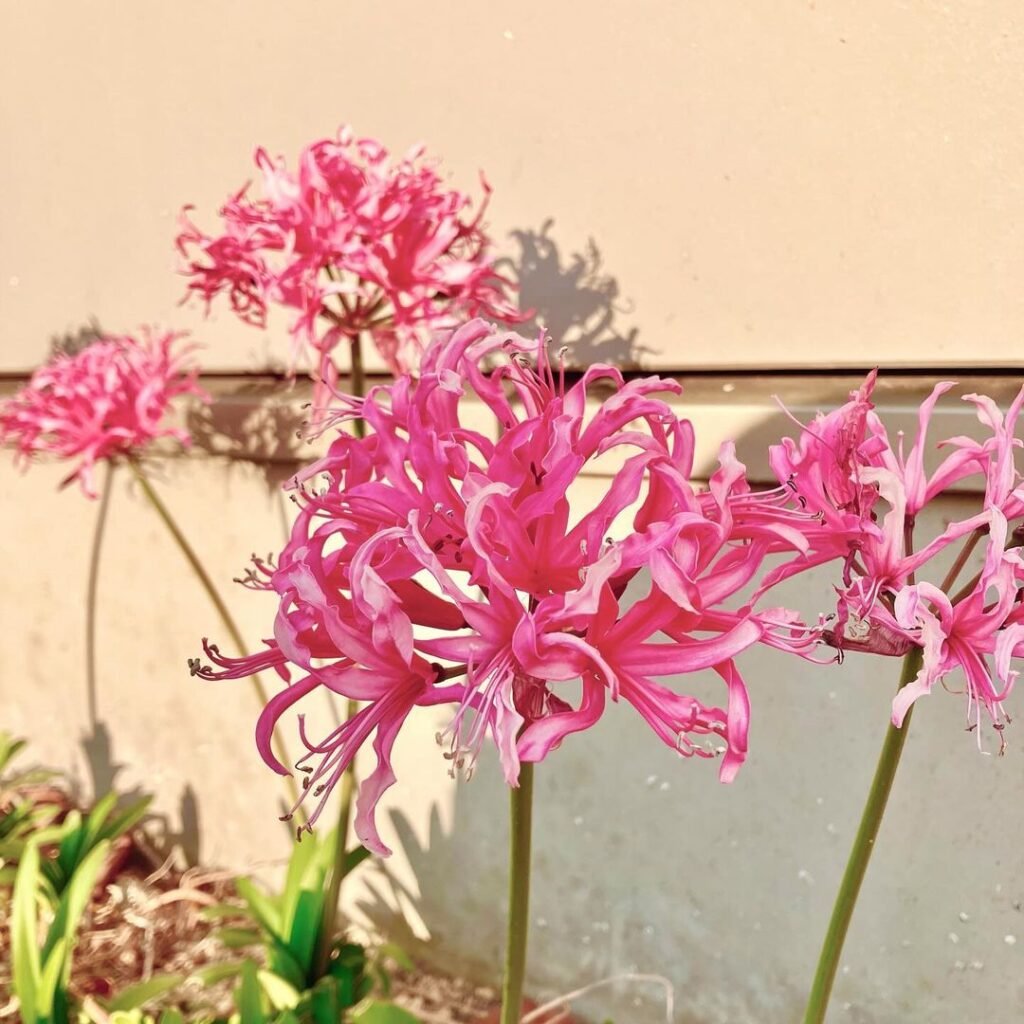
- Botanical name:Bowdenii
- USDA Growing Zones: 8-10
- Sun Exposure: Full sun
- Soil Needs: Well-drained, sandy soil
Nerine, also known as the Guernsey Lily, is a [striking, bulbous plant that produces [large, spider-like flowers in shades of pink, red, and white. These sun-loving plants prefer well-drained, sandy soil and make elegant additions to borders, rock gardens, and cut flower arrangements.
11. Narcissus
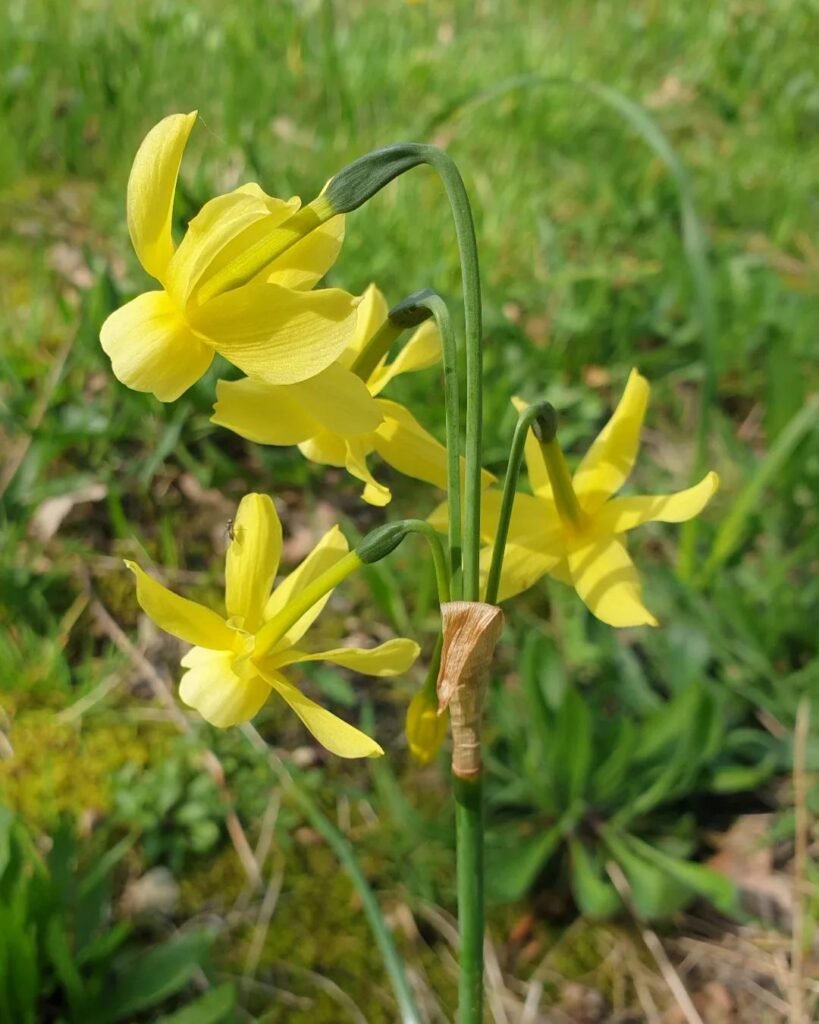
- Botanical name:Narcissus
- USDA Growing Zones: 3-8
- Sun Exposure: Full sun
- Soil Needs: Well-drained, nutrient-rich soil
Narcissus, also known as daffodils, are classic springtime flowers that feature [distinctive, trumpet-shaped blooms in shades of yellow, white, and even pink. These hardy, bulbous perennials thrive in well-drained, nutrient-rich soil and full sun, making them a reliable and easy-to-grow choice for gardens, borders, and naturalized areas.
12. Night Phlox
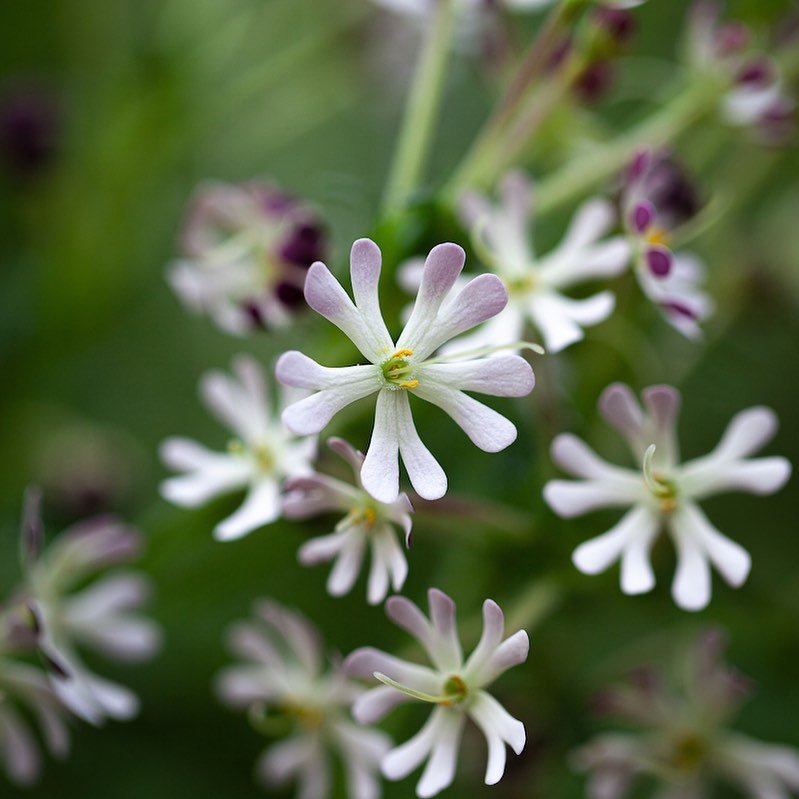
- Botanical name:Zaluzianskya
- USDA Growing Zones: 9-11
- Sun Exposure: Full sun
- Soil Needs: Well-drained, sandy soil
Night Phlox, also known as Zaluzianskya, is a [fragrant, trailing annual that produces [small, tubular flowers in shades of white, pink, and purple. These sun-loving plants thrive in well-drained, sandy soil and release their sweet, jasmine-like scent in the evening, making them a delightful addition to evening-scented gardens and containers.
13. Narrow-Leaved Sunflower
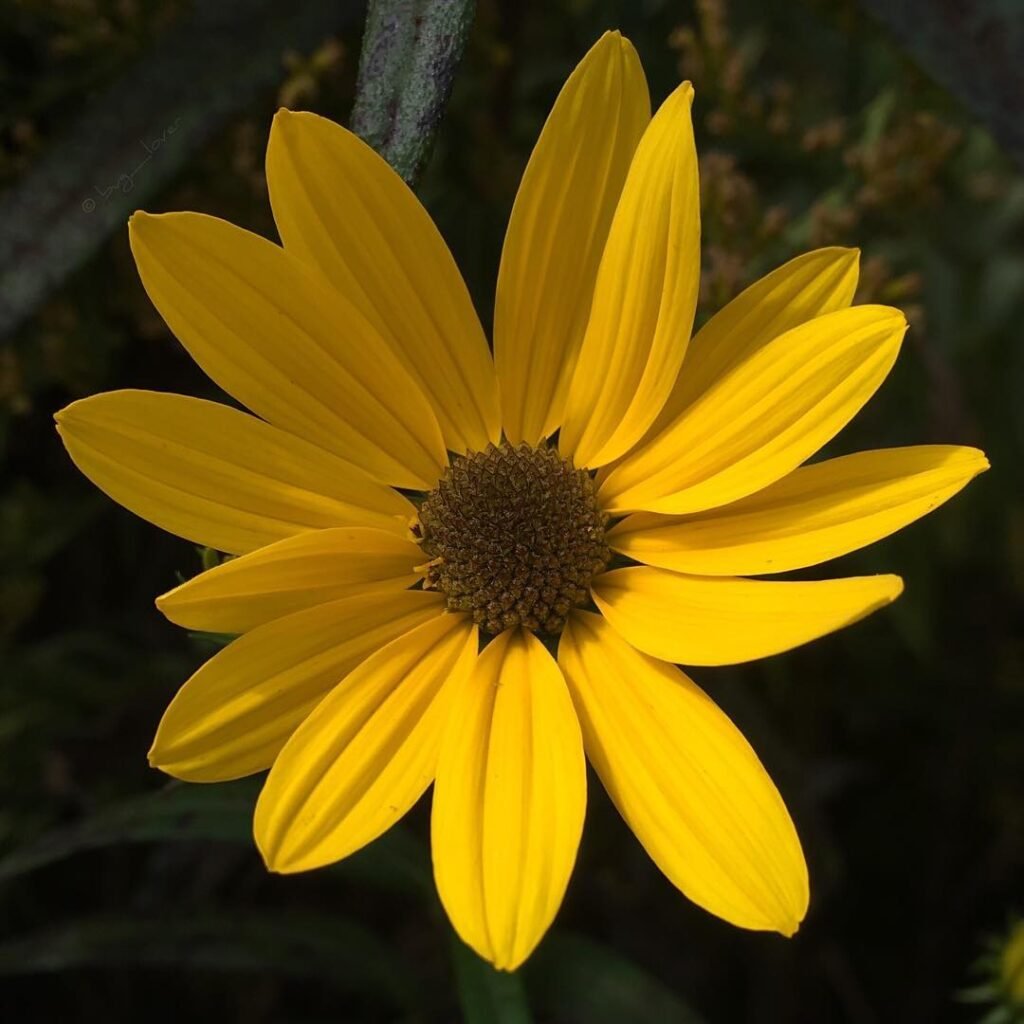
- Botanical name:Helianthus angustifolius
- USDA Growing Zones: 5-9
- Sun Exposure: Full sun
- Soil Needs: Well-drained, average soil
The Narrow-Leaved Sunflower is a [tall, slender sunflower that features daisy-like yellow blooms and distinctive, narrow leaves. These sun-loving plants thrive in well-drained, average soil and make beautiful additions to garden beds, borders, and cut flower arrangements.
14. Nemophila
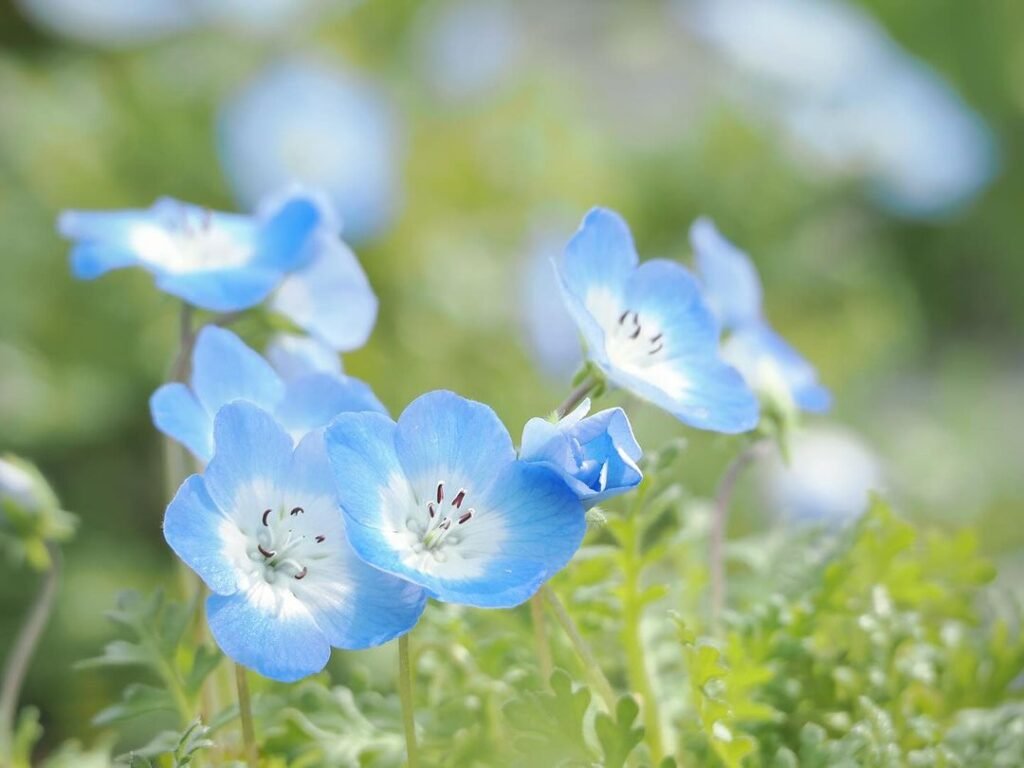
- Botanical name:Nemophila
- USDA Growing Zones: 8-10
- Sun Exposure: Partial shade
- Soil Needs: Moist, well-drained soil
Nemophila, also known as Baby Blue Eyes, is a [delicate, trailing annual that produces [small, cup-shaped flowers in shades of blue, white, and purple. These shade-loving plants prefer moist, well-drained soil and make charming ground covers, edging plants, and additions to woodland gardens and shaded borders.
15. Night-Blooming Jasmine
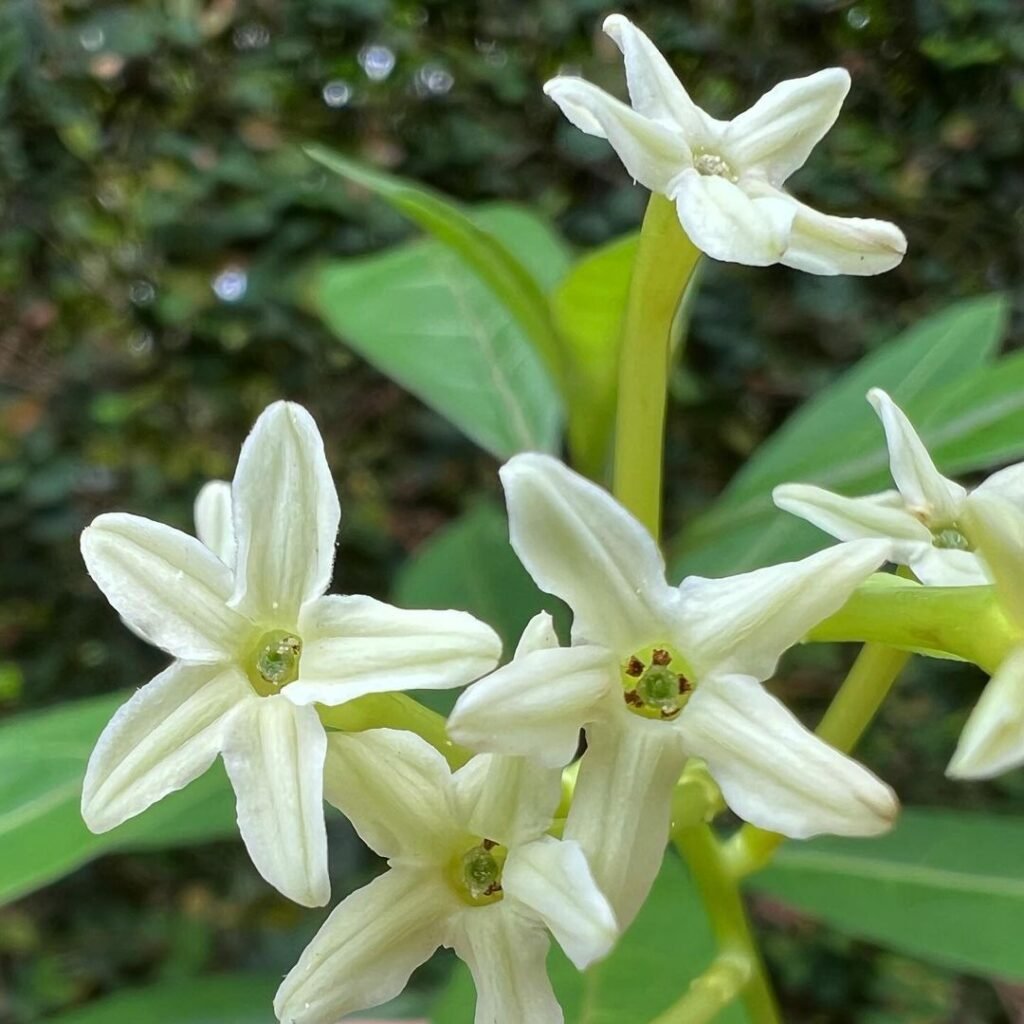
- Botanical name:Cestrum nocturnum
- USDA Growing Zones: 9-11
- Sun Exposure: Full sun to partial shade
- Soil Needs: Well-drained, nutrient-rich soil
Night-Blooming Jasmine is a [fragrant, tropical shrub that produces [clusters of tubular white flowers that release their sweet, intoxicating scent in the evening. These sun-loving or partially shaded plants thrive in well-drained, nutrient-rich soil and make beautiful additions to containers, trellises, and evening-scented gardens.
16. Nierembergia
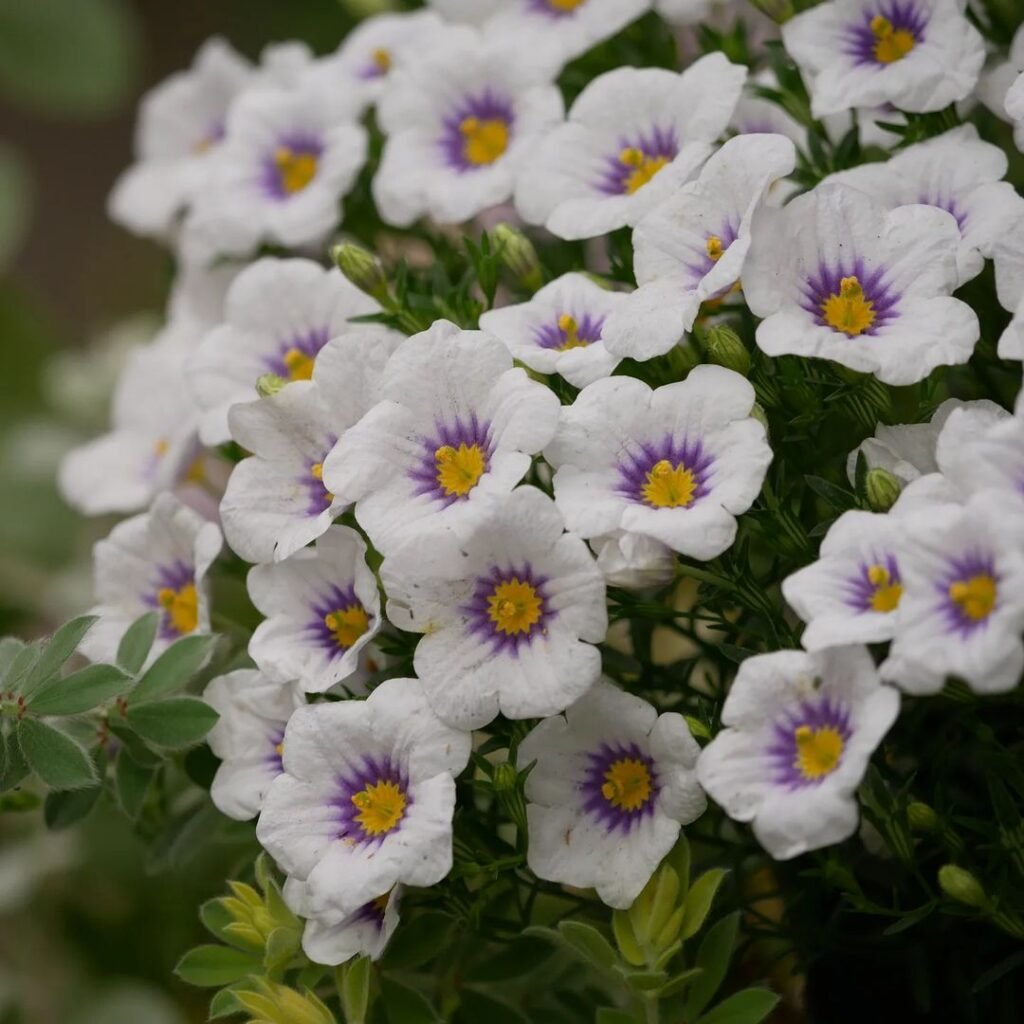
- Botanical name:Nierembergia
- USDA Growing Zones: 8-11
- Sun Exposure: Full sun to partial shade
- Soil Needs: Moist, well-drained soil
Nierembergia, also known as Cup Flower, is a [low-growing, mounding annual that produces [delicate, cup-shaped flowers in shades of white, purple, and blue. These sun-loving or partially shaded plants thrive in moist, well-drained soil and make excellent choices for edging, containers, and rock gardens.
Pingback: Blooming Beauties : 20 Flowers That Start with E - Gardener's School